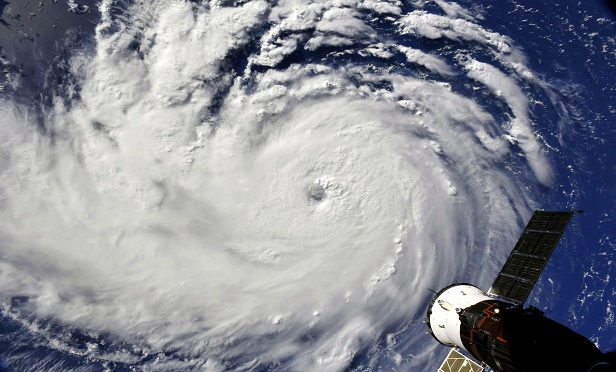 A view of Hurricane Florence from the International Space Station on Monday, Sept. 10, 2018, as it threatens the U.S. East Coast. (Photo: NASA via AP)
A view of Hurricane Florence from the International Space Station on Monday, Sept. 10, 2018, as it threatens the U.S. East Coast. (Photo: NASA via AP)
As Hurricane Florence continues to intensify, there is no question that its damage to the East Coast will be astronomical. It's threat to lives, homes, agriculture and the waning tourist season have prompted governors of several to declare a state of emergency, as well as mandatory evacuations throughout the coastal areas of the Carolinas and Virginia.
What's worrisome is that the storm could stall and wring out heavy, flooding rains throughout the area. A preliminary analysis from CoreLogic shows that nearly 759,000 homes in the Carolinas and Virginia could suffer damage from the storm surge. A homeowners insurance policy may provide some coverage for rain or wind, but flooding from overflowing rivers and streets will not be covered.
Recommended For You
The Category 4 storm is expected to make landfall Thursday evening or early Friday morning. In an effort to help minimize the damage that may occur as a result of flooding, Allianz Risk Consulting has developed a checklist, meant to be used as a guide, that should be completed before, during and after a flood.
Flood hazard analysis
The key to minimizing flood damage is adequate preparation before the event. If your site is subject to flooding, here are some considerations for each phase. (A full list of recommendations can be found on Allianz Risk Consulting's website.)
Pre-flood planning
- Develop a comprehensive, written flood emergency plan to mitigate the exposures. The plan should include: assigning emergency organizational roles and responsibilities, providing training at least annually and a business continuity plan for restoring operations after the event, among others.
- Review buildings for potential openings where flood water may enter and seal openings as necessary.
- Inspect all existing flood prevention systems if provided, such as dikes, walls, flood barriers, etc., and make repairs as necessary.
- Relocate important equipment, stock and records to higher elevations not subject to flooding.
During a flood
- Emergency response team personnel should remain at the facility if safe to do and be prepared to respond.
- Continue to monitor the media for information on potential flood damage, access to property, utility outage, etc. Update management and maintenance accordingly.
- Monitor flooding in all buildings.
After a flood
- Secure the site to prevent unauthorized entry.
- Organize and prepare emergency crews for salvage and cleaning operations.
- Notify utility companies of any outages or damage.
- Review the effectiveness of the flood emergency plan and revise as needed.
Related: How businesses and industries are preparing for Hurricane Florence
Got photos to share? We'd like to see them. PropertyCasualty360.com readers who have images of Florence's path can send them via e-mail to [email protected], for inclusion in our coverage.
© 2025 ALM Global, LLC, All Rights Reserved. Request academic re-use from www.copyright.com. All other uses, submit a request to [email protected]. For more information visit Asset & Logo Licensing.









